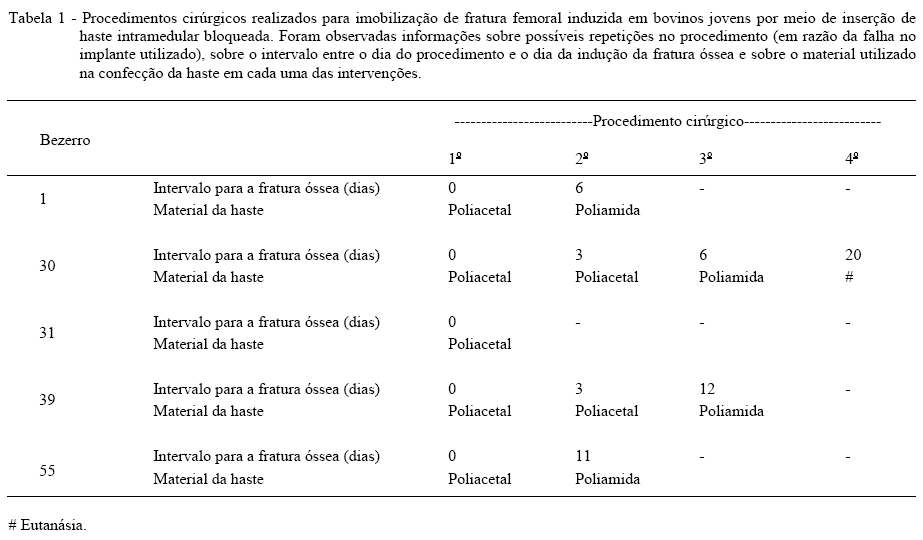In spite of the expressive development of veterinary orthopedics in the last years, long bone fractures in large animals remains a challenge for veterinary surgeons. This study is part of a proposal for development of a low-cost and easy-to-use polymeric interlocking nail designed to be used in newborns and young cattle. The objectives were to evaluate, in vivo, polyacetal and polyamide nails for immobilization of femoral fractures in calves. Five calves were submitted to general anesthesia and the left femur was fractured and then fixed using polyacetal or polyamide rods (nails) interlocked with four cortical screws (stainless steel) equally applied to the distal and proximal fracture line. In the postoperative period, calves were clinically assessed during 60 days by clinical and radiographic exams. Fractures occurred in four of the five polyacetal nails implanted in the first time and in two of the four polyamide nails implanted after the polyacetal nail failures. All failures occurred in the first 14 days after implantation. No rejection signs against the polymers were observed. In conclusion, polyacetal and polyamide did not have enough resistance to be used as intramedullary interlocking nails in this system designed to promote early femoral fractures immobilization in young calves.
calf; intramedullary interlocking nail; biomaterial; polyacetal; polyamide

